- Home
- P. T. Deutermann
Scorpion in the Sea Page 2
Scorpion in the Sea Read online
Page 2
The Captain crumpled his paper coffee cup, and pitched it through the bridge wing door over the side. “XO, make an announcement to the crew that we’re going out to investigate an unidentified submarine sighting report, and that our return to port will probably be delayed until tomorrow.”
“Aye, aye, Sir.” Farmer stepped closer, and said in a low voice, “Do you really believe that they saw a real submarine?”
The Captain shifted his large frame in the chair.
“No, XO. I don’t. And what’s more, if Group Twelve thought it was a real sighting, they wouldn’t be sending us —they’d get one of the new Spruance class guys underway, send a real ASW ship out to take a look. But, what the hell; it beats boring holes in the ocean doing CIC non-maneuvering tracking exercises.”
The XO squinted at the message again. He needed glasses, but refused to get a pair.
“Yes, Sir. I guess so,” he said. “We’ll have to hold an ASW brief this afternoon, say, 1330. If we’re gonna do this thing, we’ll need to post the blue and gold ASW teams. That’s four on-four off watches, until we give it up. They say how long we’re to look for this—er, U-boat?”
“Nope. So I’ll mess with it all night, and then we’ll do a Unless Otherwise Directed message and come the hell in. We’ve gotta get these boilers off the line; both of ’em are blowing steam, and I want to get those HP drain valves unscrewed by the end of next week so we can still go on the Fleet exercise.”
The Exec nodded. “I’ll tell Ops to file a new moverep.”
“OK, XO.”
The Captain sat back in his chair. The bridge cooled off noticeably as the ship picked up to eighteen knots and headed seaward. The bridge watch talked quietly among themselves about the sudden ASW mission. The word quickly spread through the ship, as the phone talkers chattered on their sound powered telephones to the lookouts and the main engineering spaces.
Mike Montgomery had been in command for almost two years. His selection for destroyer command had been exciting; his assignment to command Goldsborough had been something of a disappointment. Goldsborough was a twenty-seven year old, all-gun destroyer, armed with three automatic five-inch bore naval rifles, anti-submarine torpedoes, and even an ancient depth charge rack on the stern, courtesy of a senior admiral’s pet project to get depth charges back into the fleet. She had four high pressure steam boilers which could drive her at thirty two knots if everything in the main spaces stayed steam-tight, which rarely happened. From the waterline up, she presented the classic lines of a large, modern destroyer, although her ability to defend herself against modern jet aircraft had long ago been eclipsed by high performance anti-ship missiles. Her Achilles heel was the elderly steam propulsion plant, compounded by an aging hull. Most of her class had been decommissioned when maintenance costs had begun to overrun operational capability. Goldsborough was now the sole remaining steam-powered destroyer based at the Mayport naval base, surrounded by the newer gas turbine driven Spruance class destroyers, which, at 8000 tons, were twice her size and one-third her age.
Because of her age, Goldsborough had been taken off the deployment list, which meant that she did not go overseas with the carrier groups on their six month deployments anymore. She stayed home and took part in fleet exercises and other training evolutions in the waters off Florida and occasionally in the Caribbean. She had inherited the role of semi-permanent duty destroyer, which meant that she was on call for all sorts of pop-up missions, like this one.
Mike had long ago realized that not being able to take his ship on deployment meant that he had become a marginal prospect for promotion to full Captain, USN. The selection boards for Captain paid a great deal of attention to fitness reports written by carrier battle group commanders on their destroyer skippers, especially during deployment operations overseas. On the other hand, Goldsborough was much sought after as an assignment by the enlisted men, whose promotions were dependent more on time in service and competitive examination than on deployments. For many, whose wives had found good jobs in the area, not having to go overseas for six months at a crack was as close as the enlisted could get to a homesteading situation and still be on regular sea duty.
Duty on Goldsborough was pleasant enough. The base at Mayport, placed at the mouth of the St. Johns river, near Jacksonville, Florida, was small enough to be friendly and personal. There were only two admirals, and one of those was usually deployed overseas. Career Navymen understood that the importance of petty regulations varied directly with the number and seniority of admirals present, and thus Mayport was a pleasantly laid-back naval station, especially when compared to the huge fleet operating bases up north in Charleston and Norfolk.
“It’ll take us until 1530 to reach the datum, Captain,” said the Quartermaster, interrupting his reverie. He refocused on the submarine problem.
“Very well. OOD, we’ll have an all-officers at 1330 for ASW action brief. I’m going below.”
“Aye, aye, Sir. I’ll get the word passed.”
The Captain stood down from his chair, and stretched. The sea was absolutely flat calm, and its surface had gone from bronze to silvery gray in the haze of a typical late spring day off the Florida coast. In the distance the surface of the sea was dotted with small fishing boats, cabin cruisers, and the occasional commercial fisherman or shrimper with nets over the side. On the horizon, one of the massive, 60,000 ton Toyota car-carriers was getting larger as she closed in on the entrance to the St. Johns river for the run up to the port of Jacksonville.
Mike wondered at the thought of a fishing boat Skipper seeing a U-boat. Most of the Skippers he knew would not recognize a submarine if they fell over one, and some were often not sober enough to know they had bumped into something. As a bachelor, he had spent enough evenings in the back bar at Hampton’s Fish House with the fishermen to know something about their drinking habits. This was undoubtedly going to be a major waste of time. He let himself through the door at the back of the pilothouse and headed below to his cabin.
TWO
Washington, D.C., The Defense Department Photoanalysis Center, 10 April
Maryann Winters was fuming. Her boss, Harry Johnson, had groped her again, and she was getting sick and tired of it. It had been the usual scene—she standing over the optics of the analyzer table, which unfortunately pointed her curvaceous bottom at whomever might come into the lab, and Harry ambling over, ostensibly to see what she was working on. Maryann was twenty-six, single, and shapely, and Harry always managed to stand close enough to brush her backside with his right hand when she was running the photo analyzer. He had this really terrific technique: bend over with her, let his hand wander, and breathe heavily near her left ear. Unfortunately, he was a smoker, and his breath stank of stale cigarette smoke. He undoubtedly thought that he was being Mr. Cool. Maryann was ready to file a sexual harassment grievance against him with the Civil Service Board.
Rhonda from the adjoining central files office had suggested that she try stepping back on his instep with her high heels, which was how Rhonda had cured Harry when he played touchy-feely with her. Maryann, however, was determined to inflict some real retaliation through civil service channels, if she could only find a way to prove it. Her boyfriend, who worked for the Naval Investigative Service, had suggested putting some purple hands powder on the back of her skirt. This, he explained, was the invisible stuff they used to sprinkle bait, such as a wallet, for thieves. A thief would handle the wallet, and after a day or so his hands would turn purple, exposing him. Maryann was thinking seriously about trying it.
She bent down to look once more into the analyzer optics. The picture was from one of the new RQ-9X birds, and it was a sweep of the southern Mediterranean littoral. She loved doing the satellite imagery. This satellite swept across all the countries of northern Africa before moving up across the middle and eastern portions of the Soviet Union, the principal target. The Mediterranean pass was targeted to update North African naval and air orders of battle, but since Maryann
worked in the naval section, she performed analysis only on the harbors and bases. She scrolled the image from left to right, duplicating the satellite’s pass across its terrestrial footprint. She consulted her list of target installations, and then moved the crosshairs to stop at Ras Hilal, right on the coast, and initiated magnification. Counting carefully, she recorded the medium and small patrol boats, and noted that the six Foxtrot class submarines were still in place. Stepping away from the optics, she punched in a code on a computer terminal, and hit Enter. She bent back down to the eyepiece. In view now was the same pass, at the same coordinates, taken one month ago and superimposed on the current one, a standard photointerpretation technique used to detect changes. She did the count again, finding one more patrol boat in the current frame. She entered that change into the computer, thereby automatically updating the appropriate naval order of battle file.
Harry Johnson came back into the analysis room, and Maryann turned her head to see who it was, almost defensively, but his hands were full of files this time. He nodded to her, smiling as if they shared some intimate secret, and left through the side office door. Just you wait, jerk, she thought. She went back to the analysis. Entering three more codes, she turned on the infra-red display, which depicted the targets in black-white contrast as a function of heat differentials. The satellite was a fancy bird: it shot visuals and infrared at the same time. She looked back into the optics, and found something unusual. Two submarines tied up across from one another at one pier were different. One showed the normal calico tones of hot and cool patterns distributed over the length of the hull. The other showed completely homogeneous heat, from one end to the other, as if the sub had been put in an oven and brought up to one uniform temperature.
That’s weird, she thought. She called up the previous month’s image, and found that both subs moored to that pier had similar calico hot and cold patterns. OK, so we’ve got a change, but what’s it mean, she wondered. She knew, and suddenly dreaded, the next step. She was supposed to tell Harry. She thought about it for a moment. If she called Harry now, after he caressed her bottom this morning, he would think she was interested, which was the last thing she wanted to have happen. Old zoo dirt breath getting encouraged.
She thought about it. So the heat patterns are different. Ragheads probably painted the damn thing the day the pass was made. Who could tell what the crazy ragheads would do. If it showed up again on the next downlink she’d mention it to Bob Voss, the other naval imagery analyst. He could tell Harry. She looked at her watch. It was almost lunchtime; she could do Egypt before lunch. She called up the next set of images; she loved to see the pyramids on the stereo scope.
THREE
USS Goldsborough, at sea, Mayport Fleet operating areas, 10 April The officers all stood up as the Captain came into the wardroom. He nodded to the Exec, and took his chair at the head of the wardroom table. The Exec remained standing. The ship was rolling slowly as she made her way out across the continental shelf. The view through the porthole at the other end of the table alternated between gray sea and light blue sky. The Exec began the briefing.
“OK, gents, believe it or not, we’re headed for a datum, a last known position of an unidentified submarine; courtesy of a commercial fishing boat’s report at 0600 yesterday morning.”
There was some murmuring around the table. More than twenty four hours was indeed a cold trail. The officers knew that the likelihood of finding anything was close to zero.
“Yeah, I know,” said the Exec. “This is probably a drill. But. The message from Group Twelve was fairly clear: go out there, investigate, report. So we’re going out there, and we’ll set up ASW teams blue and gold, four hour watches, starting at 1600. Weps has made some changes in the watchbill, so check it out after this meeting. Ops, over to you.”
The Exec sat down in his chair next to the Captain, and Lieutenant Wayne Foster, the operations officer, stood up. He walked over to a portable briefing easel at the end of the table, and flipped the first sheet into view.
“Captain, XO, I propose we execute an expanding square search around datum upon arrival, using plan four alfa, as shown here. The XO has said we have all night, so I recommend that we open the square to five mile legs, collapse it again, and then depart the area around 1000 tomorrow morning in order to get back into Mayport at around 1500. Captain, I have a movement change report ready for your signature.”
He flipped to the next sheet, which displayed a matrix of status settings for the ship’s principal sensors.
“I recommend that we make the initial approach with sonar passive, on the remote chance that there is a submarine still there or somewhere around there. We’ve been doing a cued electronic warfare listening sweep for the past hour, and we’re looking, of course, for submarine band search radars, just in case he pokes something up to take a sweep, which, as we know, isn’t likely.”
Ensign Benson, the First Lieutenant, raised his hand. “Wayne, as I understand it, our 23 sonar doesn’t have much of a passive capability. What’s the point of being passive?”
Foster acknowledged the question. “Because if we started pinging now, and we’re still about fifty miles away from datum, any submarine out there would hear it and know there’s a tin can coming. If he’s still around that position, it’s better for us to drive in quietly, and then light off the sonar, when there’s a chance of getting contact. This assumes that there is an unidentified submarine operating out here in the first place.” He looked at the Captain.
“Good point, Ops,” interjected the Captain. “What we have here, Guys, is a report from a commercial fishing boat skipper that he saw a submarine, or, a U-boat to be precise about it. At a position that he thinks he knew. Now, we all know that these guys know generally where Mayport is, but never precisely where they are, so this datum posit we’ve got is suspect to begin with, as well as being very cold.” The Captain leaned back in his chair. “My opinion is that this is a wild goose chase. On the other hand, I’d hate to go out there, look around in a perfunctory, half-ass fashion, and then come into port, only to have another sighting report in the message traffic the next day. So we go out there, and we do it right, OK?”
The officers nodded their understanding around the table. The Captain indicated to the operations officer to continue. He then tried to put an interested expression on his face. He hated wardroom briefings; the chairs were too small, for one thing.
“Yes, Sir,” said the Operations officer. “That’s why I picked the expanding square, because the initial data is probably pretty loose. Captain, I was going to ask: has anybody checked to see if this was or is one of ours?”
“No, and our masters ashore won’t until we or another Navy unit actually makes a contact report. If we don’t come up with a sniff, then the whole thing goes into the burn bag and that’s it.”
“Yes, Sir. So, basically, we go into the datum area configured as I’ve shown here, with sonar passive, surface search radar active, air search radar passive, TACAN off, torpedo decoys streamed at short stay, and off, fathometer off, and operating on both screws. Once at datum, we’ll go active and ping around for the rest of the night.”
The Exec spoke up. “What kind of water conditions we have here, Ops?”
“Medium shitty, XO,” replied Foster. “We’re right on the edge of the Gulf Stream, so we have a huge thermal interface between the 70 degree water inshore of the Stream, and the 82 degree water in the Stream itself. That’s like a glass wall to the active sonar. Lots of mixing, boundary layer stuff, and tons of background acoustics from sea life. If a sub wanted to hide out, this is a beautiful area to do it in, except when the North Wall conditions form. Then things get pretty lively out here.”
The Captain mentally nodded his head. Ops was understating the danger of the North Wall. The Gulf Stream, that magnificent, 60 mile wide channel of warm, tropical seawater which swept up the east coast of the United States until it reached the Hatteras area of the Carolinas, and then surged o
ut across the Atlantic to make life possible in the northern Atlantic islands of Iceland and England, was a potent obstacle to any anti-submarine warfare problem, even when weather conditions were good. When certain atmospheric conditions prevailed over the continental United States, the north wall of the Gulf Stream became the ship-killing maelstrom which had given Cape Hatteras the sobriquet of Graveyard of the Atlantic.
Foster flipped to the next chart, which showed a variety of sonar ray diagrams.
“Linc Howard put these together for me this morning. They show the likely raypaths of ensonification in the environment we’re going to see out there. This one shows the outside of the Stream conditions, this one shows the inside, and these two show what the boundary looks like, which you can see is dogmeat. And you have to remember that the boundary area can be five miles wide.
“Anyway,” Foster continued, “there’s not much else to brief. We don’t know what kind of submarine this might be, or even if there has been one anywhere near this datum. And because we’re searching along the side of the Stream, the water conditions are going to produce lots of false contacts and a great deal of background noise. The continental shelf begins to drop off there, too. The water depth starts to go from the 300 to 400 foot range on the shelf down to ten thousand feet in the Atlantic abyss, so we’ll get reverberation in the active mode. About the best we can do is maybe spook the guy into running away, and pick up something when he moves. I wish we had a helo for this.”
“There was no mention of any air support, Ops,” said the Captain. “I think maybe if we got a contact which we could truthfully classify as something above ridiculous, they might bang a chopper out, but I wouldn’t hold my breath, especially on a Friday morning. Nobody has been put on standby, that I know of.”

 The Nugget
The Nugget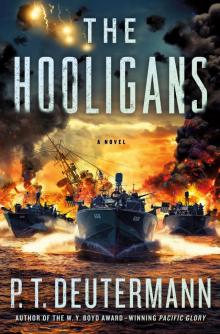 The Hooligans
The Hooligans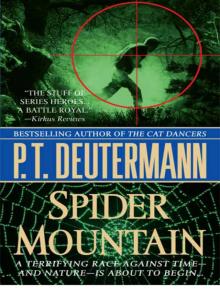 SPIDER MOUNTAIN
SPIDER MOUNTAIN![Cold Frame [retail] Read online](http://i1.bookreadfree.com/i/03/19/cold_frame_retail_preview.jpg) Cold Frame [retail]
Cold Frame [retail] Sweepers
Sweepers Cam - 03 - The Moonpool
Cam - 03 - The Moonpool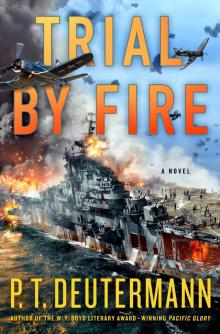 Trial by Fire
Trial by Fire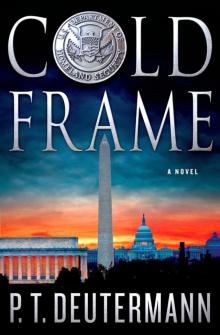 Cold Frame
Cold Frame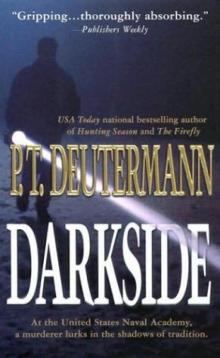 Darkside
Darkside Cam - 04 - Nightwalkers
Cam - 04 - Nightwalkers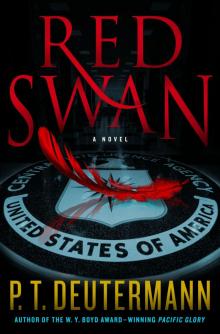 Red Swan
Red Swan The Commodore
The Commodore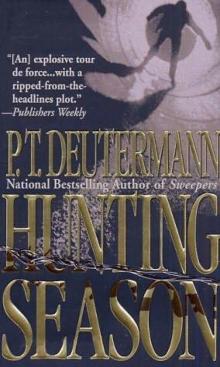 Hunting Season
Hunting Season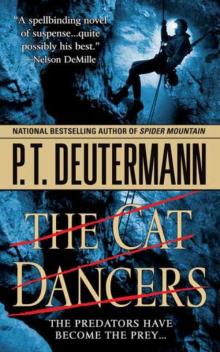 The Cat Dancers
The Cat Dancers Scorpion in the Sea
Scorpion in the Sea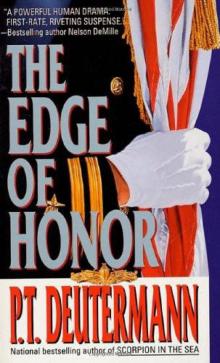 The Edge of Honor
The Edge of Honor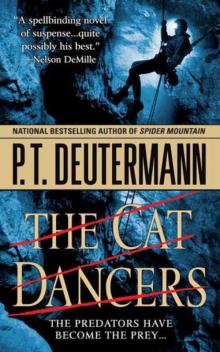 The Cat Dancers cr-1
The Cat Dancers cr-1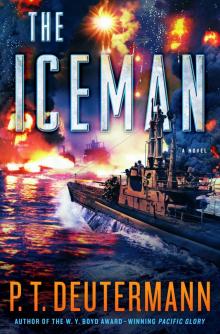 The Iceman
The Iceman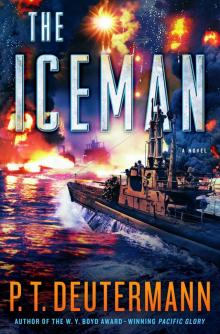 The Iceman_A Novel
The Iceman_A Novel Official Privilege
Official Privilege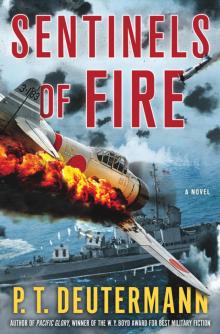 Sentinels of Fire
Sentinels of Fire The Moonpool cr-3
The Moonpool cr-3 Nightwalkers cr-4
Nightwalkers cr-4 The Firefly
The Firefly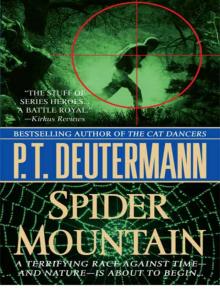 Spider mountain cr-2
Spider mountain cr-2 Pacific Glory
Pacific Glory The Last Man
The Last Man